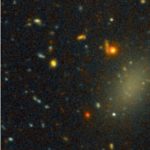Key Takeaways:
- The Fukang meteorite, discovered in China in 2000, is a stunning stony-iron meteorite renowned for its honeycomb-like crystals.
- It belongs to a rare class of meteorites called pallasites, characterized by networks of nickel-iron metal embedded with translucent olivine crystals.
- Pallasites were originally named by Peter Simon Pallas in 1772 and are considered one of the earliest recognized extraterrestrial materials.
- These meteorites provide insight into the deep interior of the solar system, formed around 4.5 billion years ago in differentiated asteroids.
- Pallasites are exceptionally rare, constituting less than 0.2 percent of known meteorites on Earth.
- The Fukang meteorite’s discovery involved a curious hiker who sent samples for analysis, revealing its extraordinary appearance, making it highly sought after.
- Parts of the Fukang meteorite have been displayed at events and auctioned, with smaller pieces fetching substantial sums due to their age and beauty.
In 2000, an unsuspecting hiker in the Fukang Mountains of China stumbled upon a celestial marvel that would captivate the world – the Fukang meteorite. This extraordinary stony-iron meteorite is a dazzling specimen adorned with a mesmerizing array of honeycomb-like crystals. Revered as the most famous meteorite globally, the Fukang meteorite’s allure lies in its unique characteristics.
The Fukang meteorite belongs to the exclusive category of pallasites, previously known as lithosiderites. Pallasites are characterized by intricate networks of nickel-iron metal entwined with silicate mineral olivine crystals. When polished, pallasites unveil a stunning arrangement of translucent green crystals, although they may also exhibit yellow, brown, or gold hues due to terrestrial weathering. The nomenclature “pallasites” traces back to Peter Simon Pallas, a German doctor and naturalist who, in 1772, was the first to describe the Krasnojarsk pallasite found in Siberia.
These meteorites offer a remarkable glimpse into the ancient history of our solar system, having formed approximately 4.5 billion years ago within differentiated asteroids. The differentiation process led to the separation of a celestial body into core and mantle components due to thermal alterations. O. Richard Norton, author of The Cambridge Encyclopedia of Meteorites, likens pallasites to an “immiscible emulsion, like oil and water.” During this process, crystals formed through fractionalization, isolating the olivine mineral deep within the asteroid. The rarity of pallasites is underscored by the fact that they constitute less than 0.2 percent of all known meteorites on Earth.
The saga of the Fukang Meteorite commenced when a curious hiker, having encountered the celestial rock on previous occasions, sent a sample for analysis. This led to the revelation of its extraordinary “stained glass” appearance, rendering it one of the most coveted meteorites globally. Portions of the Fukang meteorite have been displayed at prestigious events like the Tucson Gem and Mineral Show. In 2008, a significant fragment, weighing approximately 420 kilograms, was offered at auction in New York with an expected price tag exceeding $2 million, although it ultimately went unsold. In 2021, a smaller piece of the Fukang meteorite was sold by Christie’s for $30,000.
The astronomical prices associated with these meteorites may seem otherworldly, but their age and breathtaking beauty make them irresistible treasures for collectors and enthusiasts alike. The Fukang meteorite, with its enthralling honeycomb crystals, stands as a testament to the wonders of the cosmos and the allure of the extraterrestrial in our terrestrial world.


